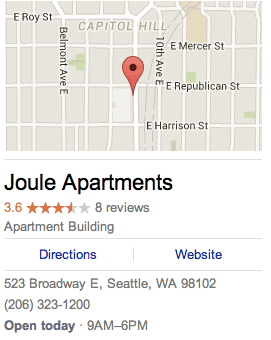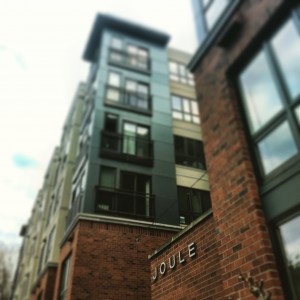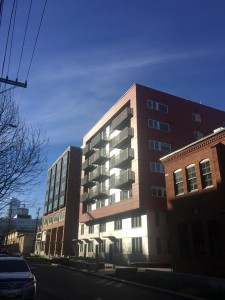Doing the Math: MFTE Creates Many More Housing Units Than Grand Bargain
Let’s take a super quick look at a couple projects that participated in the City’s Multifamily Tax Exemption (MFTE) Program, a very successful program that has produced thousands of units of rent restricted housing for people earning between 60 and 80 percent of Area Median Income (AMI). The MFTE works by giving a property tax exemption to developed properties in exchange for a 20 percent inclusion of rent restricted units. It has created thousands of units over the years. You can read more about the program and how it works in this post.
Let’s compare two larger housing projects that are participating in the MFTE program. My assumptions are based on the Final Framework document and other media that pegs the Grand Bargain inclusion rate at 7 percent of the total project. That may end up being bonus area, not units. Also, another limiter on my comparison is the fact that we don’t know what the projects would look like exactly with a boost of Grand Bargain upzones since those upzones aren’t proposed yet.
But if we just compare the existing number of units and apply the percentages we get a comparison of what the two programs would look like hypothetically all things being held constant. One other note, the Stackhouse Apartments are in South Lake Union, and under the Grand Bargain that project would have zero units of included affordable housing since SLU is not likely to perform but would instead pay an in lieu fee. I welcome alternative scenarios from smarter people than me.
But here they are:
Joule Apartments
With MFTE
295 Total Units
59 Units at 60 – 80 Percent AMI (20 percent inclusion)
Under Grand Bargain
295 Total Units
21 Total units at 60 – 80 Percent AMI (7 percent inclusion)
Assuming 10 percent increase in units with upzones
325 Total Units
23 Total units at 60 – 80 Percent AMI (7 percent inclusion)
Stackhouse Apartments
With MFTE
278 Total Units
56 Units at 60 – 80 Percent AMI (20 percent inclusion)
Under Grand Bargain
278 Total Units
19 Total units at 60 – 80 Percent AMI (7 percent inclusion)
Assuming 10 percent increase in units with upzones
306 Total Units
21 Total units at 60 – 80 Percent AMI (7 percent inclusion)
I’m a philosophy major and I’ve avoided math my whole life, but it sure looks like MFTE dramatically outperforms the Grand Bargain even if additional units are feasible, which are often aren’t. There are a lot of fair criticisms of this analysis that could be offered. Some might say it’s a comparison of the number of apples to the number of oranges created by each program. They would have a different methodology so that’s a really good point and one that I simply don’t have enough information to fully calculate. Since the projects everywhere will vary a lot in terms of square footage, it’s going to be hard to figure out how the Grand Bargain would check out in terms of units. The costs of additional construction would also have to be calculated.
But it doesn’t take a math major to get that 20 percent is more that 7 percent of any number except zero, the number of units that will be built under the Grand Bargain Downtown and in South Lake Union and the number that will be built if other areas can’t make the financing work. Also, how could MFTE and upzones actually work together rather than separately? I don’t know. We need to stop this whole process and ask a lot more questions. And do the math!





